It’s been said that there are decades where nothing happens, and there are weeks where decades happen. Lately, it feels like the latter. In addition to a flurry of Trump tariffs and executive orders, there’s been progress in some regional conflicts, seismic developments in the technology sector, shift in the path interest rates may take, and we have an abundance of political drama here in Canada. It’s been fertile ground for fear and greed, the emotions that drive behaviour for many investors. In a sign of how quickly the outlook is shifting, we’ve had to write and re-write this newsletter several times, and there’s a chance that it is rendered stale as it arrives in your inbox.
We are navigating this uncertain environment by making portfolio adjustments where needed, but also maintaining a longer-term view and being careful not to overreact. The decision to overweight U.S. equities in the second half of 2024 has paid dividends. Combined with the lowest portfolio exposure to the Canadian equity market since 2022, we anticipate our current positioning should help cushion the outsized volatility that tariffs have triggered.
As we all navigate these uncertain times, we encourage you to reach out to us if you have any questions or concerns. Given the accelerated rate of change, we are likely to have additional insights in the coming days and weeks.
Global economy entering uncharted waters
Trump’s imposition of 25% tariffs on Canada and Mexico, 10% on China, and threats against virtually every other trading partner was possible, but deemed improbable by many economists, political strategists and market participants because of the detrimental impact tariffs could have on all parties involved. With post-World War II global prosperity partially built on a reduction of tariffs and trade barriers, the introduction of sizable tariffs by the U.S. is being seen by many as irrational. Since tariffs of this magnitude have been absent from the modern economic lexicon, the range of outcomes for the U.S. and its trading partners has widened significantly.
Gauging the potential impact of tariffs with any precision is difficult at this point due to numerous variables such as: are the tariffs temporary or permanent, will retaliation be met with a volley of tariff escalations, to what degree can companies and consumers absorb the tariffs, can timely monetary and fiscal policy initiatives and currency moves help cushion downside scenarios, is there an opportunity to support the Canadian economy by rewiring interprovincial trade, will there be a coordinated global response, and will renewed Canadian political leadership in coming months make any difference.
Interest rates get pushed off the front page
Frequent readers of this newsletter know that interest rates have been the primary topic for the past several quarters. Given the eruption of a global trade war, interest rates have been relegated to the back pages of the market’s psyche, for now. With pandemic-induced inflation receding, global interest rates peaked in 2023-2024 and have been steadily declining and present an important tailwind to the economy and markets. Before the emergence of tariff uncertainty, the consensus expected inflation to gradually normalize toward the 2% target and allow central banks to continue reducing rates in 2025.
As of Friday, January 31, the Bank of Canada was expected to cut interest rates by a further 50 bps this year from the current 3% level. The U.S. Federal Reserve was already slowing down its pace and 25-50 bps of cuts were priced in for 2025 (unless otherwise stated, historical and forecast data are per Bloomberg). This weekend’s tariff announcements could mark a deviation in these paths, with Canadian rates potentially falling faster and further while the Federal Reserve may abandon cuts altogether and start considering rate hikes if tariff-induced inflation materializes. The Canadian economy’s higher sensitivity to short-term interest rates (due to a larger role of the real estate industry) means 200 bps of cuts since June 2024 and the prospect of deeper cuts ahead should help ease the sting tariffs may cause.
Despite the collective hand wringing that has already started, an underappreciated fact is that Canada’s fiscal balance sheet remains relatively pristine compared with G7 peers. Based on 2023 data from the International Monetary Fund, Canadian government net debt to GDP was 14% compared with the U.S. and G7 average at 95%. Unlike the U.S., which has been propping up its GDP growth by running massive fiscal deficits (6.6% of GDP in 2023), Canada’s small fiscal deficit ratio (0.5% of GDP in 2023) provides ample ammunition for fiscal stimulus and longer-term infrastructure investment.
A weaker loonie is another source of stimulus
The combination of lower relative interest rates and the threat of Trump tariffs had already combined to depress the Canadian dollar vis-à-vis the U.S. dollar over the past two months. At the time of writing (February 2) tariff news had pushed the loonie below US$0.68, a level not seen since 2003 (since 1970, the low water mark for the CAD/USD was US$0.6176 reached in January 2002). As in past economic cycles, a lower domestic currency acts a third source of economic stimulus by assisting exports and discouraging imports. We expect Canadian dollar weakness to linger while tariff uncertainty persists.
